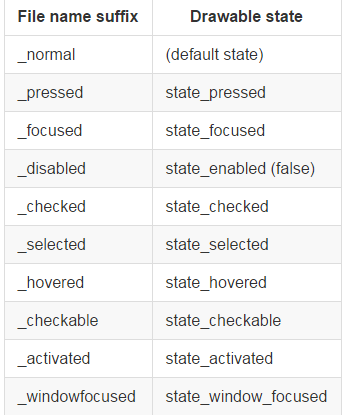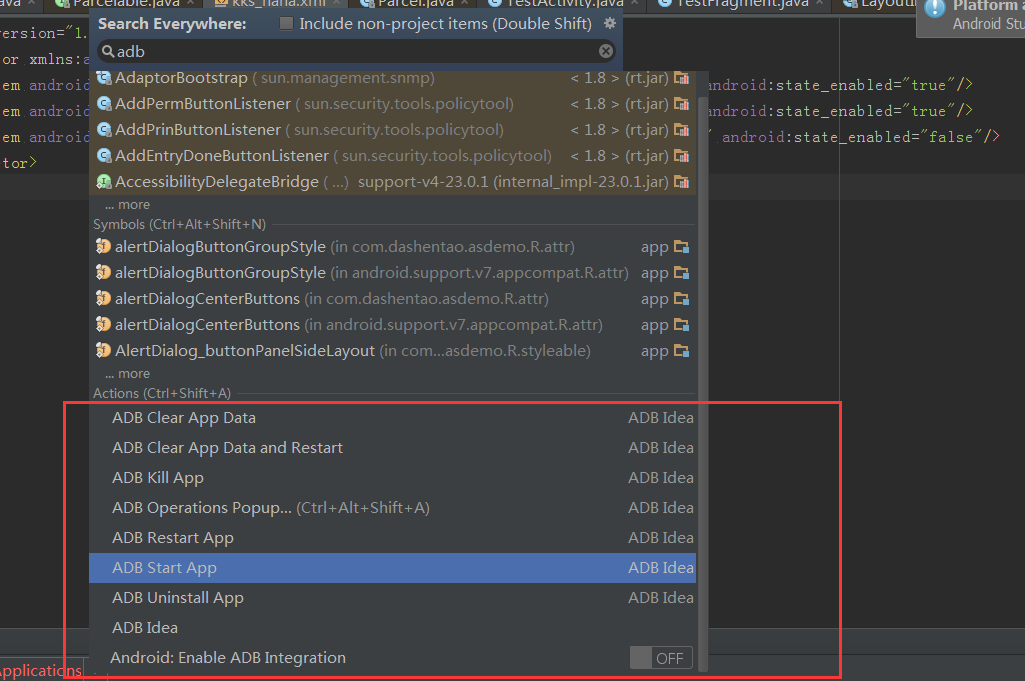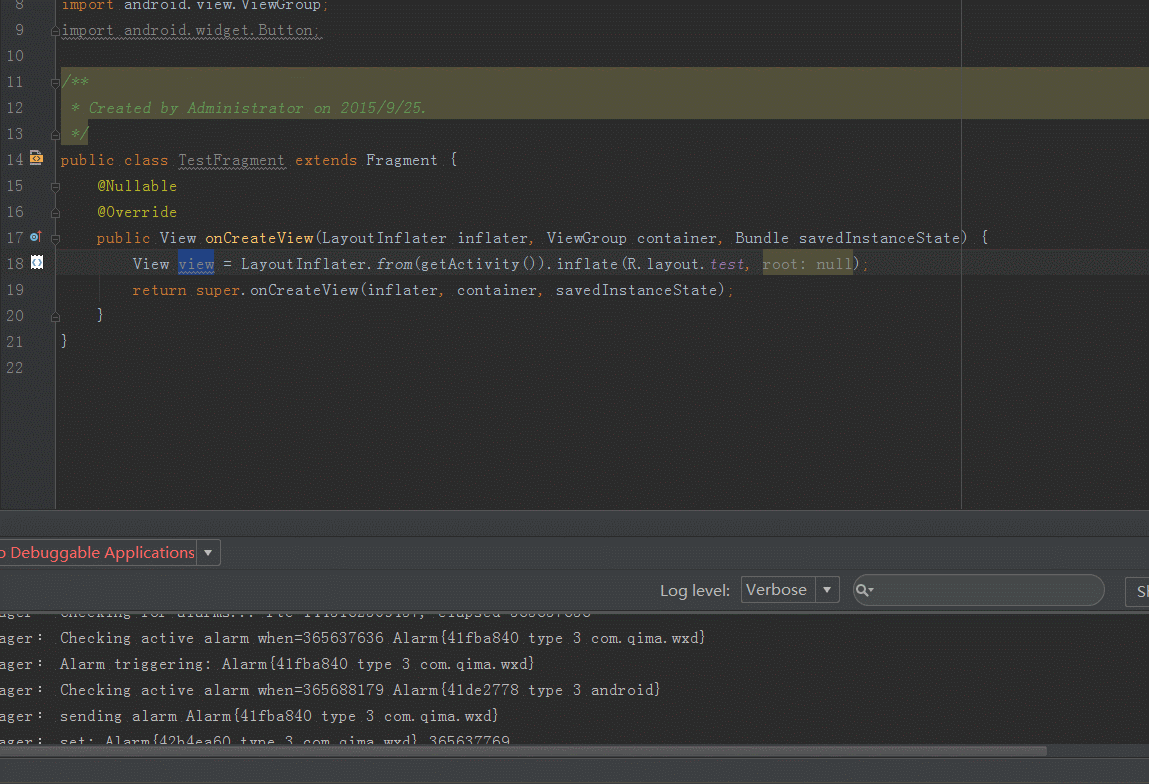这里分享几个android studio插件,绝对提升开发逼格:
AndroidSelectorChapek
androidSelectorChapek—github
安装方法:
1:Android studio ->Preferences→Plugins→Browse repositories 选择SelectorChapek。
2: 本地下载, 安装方法Preferences→Plugins→Install plugin from disk。安装插件成功之后,选择几张图片放在drawable-hdpi或者drawable-xhdpi下点击右键选择generate android selectors
在drawable folder里面自动会生成selector文件 如下:
这里有个地方要注意图片的后缀需要规范具体的规范如下:
还有一点就是图片的前缀一定要相同否则生成不了图片如上例:
ADB IDEA
功能概要:一键弹出ADB命令,再也不要敲那些恶心的ADB命令了(当然基本的ADB命令你还是得记住,这个只是为了偷懒而偷懒!-))
安装插件方法同楼上:
安装完之后具体使用如下一般有两种,具体如下:
1:全局搜索(double shift):
2:Tools->Android->ADB Idea
装完之后,瞬间提升逼格。
Prettify
这个绝对是好东西,看下布局文件:
<?xml version="1.0" encoding="utf-8"?>
<RelativeLayout xmlns:android="http://schemas.android.com/apk/res/android"
android:layout_width="match_parent"
android:layout_height="match_parent">
<Button
android:id="@+id/button1"
android:layout_width="wrap_content"
android:layout_height="wrap_content"
android:text="button1" />
<Button
android:id="@+id/button2"
android:layout_width="wrap_content"
android:layout_height="wrap_content"
android:layout_below="@id/button1"
android:text="button2" />
<Button
android:id="@+id/button3"
android:layout_width="wrap_content"
android:layout_height="wrap_content"
android:layout_below="@id/button2"
android:text="button3" />
<TextView
android:id="@+id/textview1"
android:layout_width="wrap_content"
android:layout_height="wrap_content"
android:layout_below="@id/button3"
android:text="textview1" />
<TextView
android:id="@+id/textview2"
android:layout_width="wrap_content"
android:layout_height="wrap_content"
android:layout_below="@id/textview1"
android:text="textview2" />
<TextView
android:id="@+id/textview3"
android:layout_width="wrap_content"
android:layout_height="wrap_content"
android:layout_below="@id/textview2"
android:text="textview3" />
</RelativeLayout>装完之后看下图演示,好爽有没有:
自动生成findViewById,再也不用敲击这些恶心代码了。
后续会持续更新。








 本文介绍了几款能够显著提高Android开发效率的AndroidStudio插件,包括AndroidSelectorChapek、ADBIDEA和Prettify等。这些插件不仅能够帮助开发者自动生成selector文件、快速调用ADB命令,还能美化布局文件并自动生成findViewById代码。
本文介绍了几款能够显著提高Android开发效率的AndroidStudio插件,包括AndroidSelectorChapek、ADBIDEA和Prettify等。这些插件不仅能够帮助开发者自动生成selector文件、快速调用ADB命令,还能美化布局文件并自动生成findViewById代码。

























 713
713

 被折叠的 条评论
为什么被折叠?
被折叠的 条评论
为什么被折叠?








